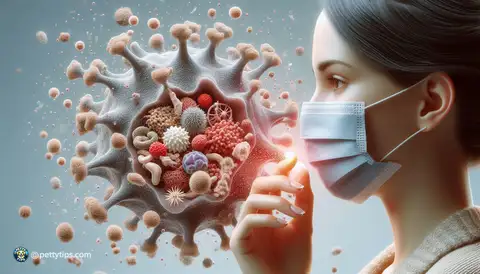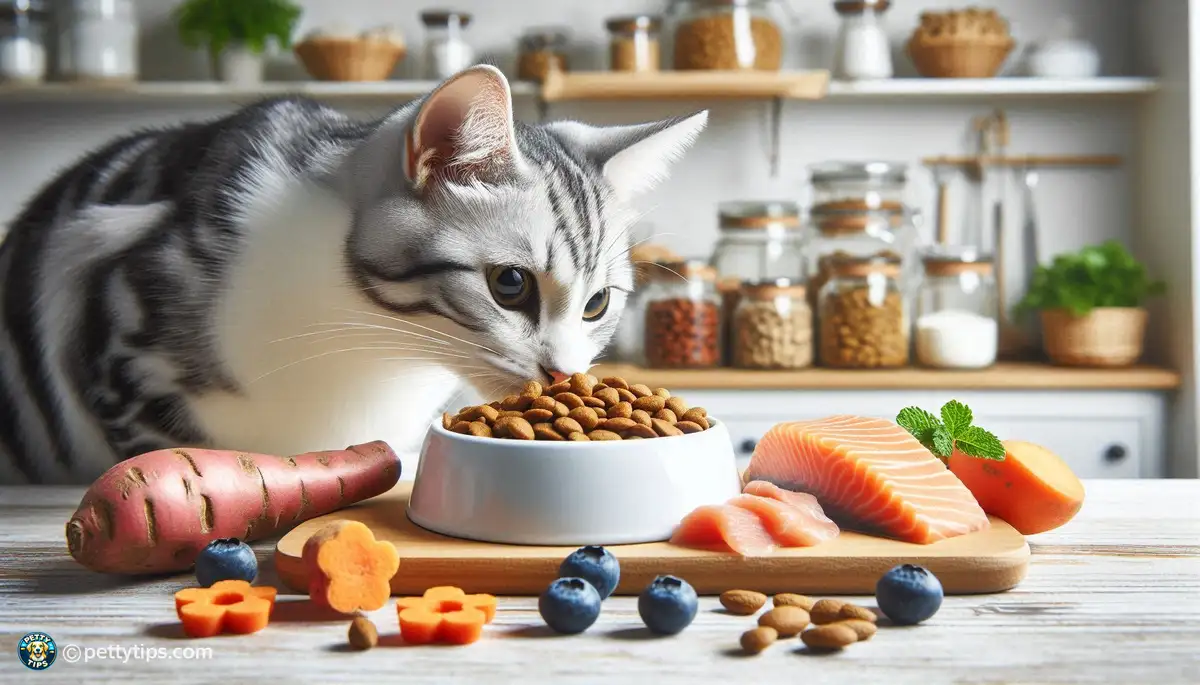
The Role of Protein in Pet Allergies
Caleb O'Donnell - Sep 29, 2024 - 6 min read


food allergies in pets are more common than you might think. Just like humans, our furry friends can develop adverse reactions to certain ingredients in their food. A food allergy occurs when a pet's immune system identifies a particular ingredient as harmful and reacts to it. This immune response can manifest in various symptoms, ranging from mild itching to severe gastrointestinal issues or even anaphylaxis. Common allergens in pet food include beef, chicken, dairy, eggs, and grains like wheat or corn.
Recognizing food allergy symptoms in your pet is crucial for their health and well-being. Symptoms can vary widely between individuals and may not always be immediately obvious. Keep an eye out for signs such as itching, redness or inflammation of the skin, recurrent ear infections, gastrointestinal disturbances like vomiting or diarrhea, and even chronic conditions like asthma. If you notice any of these symptoms, it's essential to consult your veterinarian for a proper diagnosis.
Diagnosing a food allergy in your pet requires careful observation and sometimes, a bit of detective work. Your veterinarian will likely start by ruling out other potential causes of your pet's symptoms, such as parasites or environmental allergies. They may then recommend an elimination diet, where potential allergens are removed from your pet's diet for a period of time to see if their symptoms improve. In some cases, allergy testing or a food trial under veterinary supervision may be necessary to pinpoint the culprit allergen.
Once a food allergy has been diagnosed, the next step is to select an appropriate diet for your pet. This often involves finding a commercial pet food that is specifically formulated for pets with food sensitivities. These diets typically contain novel protein sources and limited ingredients to minimize the risk of triggering an allergic reaction. Alternatively, your veterinarian may recommend a homemade or raw diet tailored to your pet's specific needs.
When selecting pet food for a furry friend with food allergies, it's essential to become a savvy label reader. Look for products that clearly state they are formulated for pets with food sensitivities or allergies. Pay close attention to the ingredient list, avoiding any potential allergens that have been identified through diagnostic testing. Keep in mind that ingredients can vary between brands, so it's crucial to review labels carefully, even if you're purchasing a product you've used before.
Cross-contamination can pose a significant risk for pets with food allergies. Even trace amounts of an allergen can trigger a reaction in sensitive individuals. To minimize this risk, it's essential to separate your pet's food and feeding utensils from those of other pets in the household. Additionally, be cautious when preparing meals or treats for your pet, ensuring that surfaces and utensils are thoroughly cleaned to prevent accidental exposure to allergens.
Navigating food allergies in pets can be challenging, but you don't have to do it alone. Your veterinarian is your best ally in managing your pet's allergies and ensuring their long-term health and well-being. Be sure to communicate openly with your veterinarian about your pet's symptoms, dietary history, and any concerns you may have. They can provide personalized recommendations based on your pet's specific needs and help you develop a comprehensive management plan.
In some cases, consulting with a veterinary nutritionist may be beneficial, especially if your pet has multiple food allergies or complex dietary requirements. A veterinary nutritionist can work with you and your veterinarian to develop a customized feeding plan tailored to your pet's unique nutritional needs and preferences. They can also provide guidance on selecting commercial diets, formulating homemade recipes, and navigating any challenges that arise along the way.
While dietary management is the cornerstone of managing food allergies in pets, complementary and alternative therapies may also play a role in supporting your pet's overall health and well-being. These may include supplements, acupuncture, herbal remedies, or even chiropractic care. It's essential to discuss any alternative therapies with your veterinarian before incorporating them into your pet's treatment plan to ensure they are safe and appropriate for your furry friend.
Navigating food allergies in pets can be a complex and challenging journey, but with the right knowledge and support, you can help your furry friend live a happy, healthy life. By understanding the signs and symptoms of food allergies, working closely with your veterinarian to diagnose and manage your pet's condition, and making informed decisions about their diet and care, you can ensure that they get the nourishment they need without the risk of triggering an allergic reaction. Remember, you're not alone – your veterinarian and other pet care professionals are here to help every step of the way.